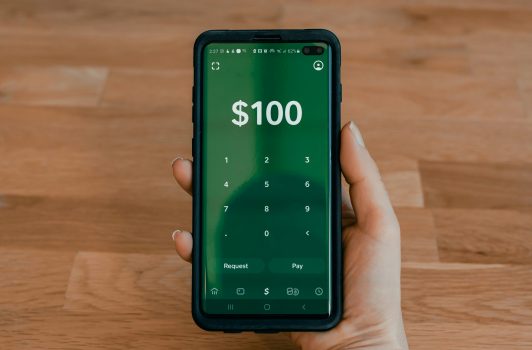TP Vision was founded on the combined assets and skills of two prominent players in the TV business: based in Amsterdam, it is 70% owned by TPV and 30% by Royal Philips Electronics. TP Vision is the exclusive brand licensee of Philips TV in Europe, Russia, Middle East, Brazil, Argentina, Uruguay, Paraguay, and selected countries in Asia-Pacific, excluding China, India, and North America. It is now engaged in developing, manufacturing, and marketing Philips branded TV sets.
“TP Vision is creating a profitable and focused TV company by combining the design expertise and innovative Philips TV heritage with the operational excellence, flexibility, and speed of TPV,” explains Simon Karregat, head of treasury and credit & risk management at TP Vision. Having worked for Philips as head of the dealing room, Karregat really understands the new company’s TV business, which was previously part of Philips Consumer Lifestyle.
He continues: “As fierce competition in the TV market put pressure on margins, TVs were an unprofitable business over the last couple of years. We intend to change this by creating a lean and agile company that is solely focused on TVs.”
Separate entity
To make TP Vision successful and profitable, the company needs to go through a comprehensive transformation process, which had already started long before the official birth of the joint venture on 2nd April, 2012. “In preparation of the joint venture, we separated the TV business from Philips Consumer Lifestyle first. From 1st January, 2012 we reported ‘TV’ as a separate entity,” Karregat says. “It is important for treasury activities that such a fundamental change takes place in a smooth and controllable way. The early measures ensured a hassle-free transition when TP Vision finally took over the TV business from Philips and operated as an independent stand-alone company as of 1st April, 2012.”
Decoupling from a big corporate like Philips was, and still is, a complex process for TP Vision. The disentanglement of the TV business from Philips was a tough challenge because it had been fully integrated into the Philips Consumer Lifestyle business all over the world. This applied to all areas including sales, finance, and IT. One of the most important constraints in the disentanglement was that the operation had to be realized within a very short time frame but with strict cost management. From the beginning of the joint venture, the top priority was cost efficiency and continuing to reduce the breakeven point of the global company. Additionally, achieving Philips’ target gross margin had to be achieved in a highly competitive TV market. This was done by closely managing product costs while selling an improved mix of products (more high-end and larger screen sizes).
New banking infrastructure
To overcome all the challenges related to finance, TP Vision engaged Zanders to support them in setting up a new treasury organization and separating the television business from Philips’ integrated in-house banking structure. This meant that, in a short time frame, not only did Philips’ treasury have to implement and test a new banking infrastructure, but also a new payment infrastructure and a treasury management system (TMS).
At the beginning, TP Vision could take over some elements from Philips and use them right away, such as production units, IT infrastructure, and distribution centers. Other solutions and systems needed to be set up from scratch. “Because of the time pressure, the complexity of the process, and the kernel versions in the original system, we decided to retain the Philips kernel for the time being and to migrate to the leaner TPV kernel later,” Karregat explains. The kernel is the main component of most computer operating systems and thus builds the backbone of most business and finance applications. Karregat continues: “We couldn’t copy the treasury system from Philips because the payment infrastructure of TPV is different.” The company selected IT2 as their TMS. In some countries, however, certain processes (e.g., invoice booking, entering payment proposals, reporting) are outsourced to third parties, such as Infosys. Karregat adds: “We were fully aware that such a complex migration process would cause some initial difficulties as people had to get used to a completely new way of working. This took some time and required a lot of training.”
Bank selection
The selection of a banking partner was another important step in the joint venture’s financial formation process. Karregat says: “After a thorough selection procedure, two banks remained on the list of bank candidates. As we didn’t want to delay our transformation process until the final signing of a contract with one of the two candidates, we started to set up our internal financial structure simultaneously. We created two groups to work on this: one for each of the two banks.”
Karregat had to consider many different factors when building TP Vision’s new treasury, including credit limits and FX limits: “You have to operate differently, with different interfaces and different restrictions for the different countries. We chose Bank of America as our bank because of their global network, and they are providing the necessary limits for us. However, as they do not offer services in all the countries that we operate in, another party sometimes has to be involved. Multiple banks mean multiple sources, whereas with one bank you can use just one banking tool. It all looks standardized but, in reality, it is not: banks have their own policies and procedures, their own formats. Your treasury system must be able to absorb this.”
TP Vision decided to take over the in-house banking concept of Philips. Karregat explains: “With in-house banking you can manage your own internal payments, it provides a better insight into your liquidity, and you can better manage and fund your entities. It is definitely very efficient.”
Zanders assisted Philips in the set up of a stand-alone treasury for the new joint venture. In order to disentangle the treasury and cash management operations for TV, the assistance included:
- The set-up and implementation of a global bank account infrastructure;
- The creation and implementation of a cash management structure;
- Arrangement of local working capital facilities for entities with legal restrictions on setting up cash pools;
- The set-up of an in-house bank;
- The set-up of a cash flow forecasting methodology company-wide;
- Selection and implementation of a TMS;
- The identification and implementation of a hedge strategy;
- The set-up of a proper treasury policy, processes and procedures
Fewer organizational layers
As a big organization, Philips is used to working according to clearly defined standards. However, as they don’t fit TP Vision’s lean treasury structure, the joint venture is now creating its own processes and standards.
“Adequate cash-flow forecasting is essential for our company and we have to manage our treasury exposures thoroughly. The smaller the company, the bigger the risks. We definitely have to trigger a change in employee mindsets. They have to pay more attention to treasury and cash-flow forecasting than before,” says Karregat. In addition, people are more involved in treasury now as there are fewer organizational layers. “For example, we are now much closer to the countries’ treasury. Therefore, treasury has become much more tangible for them. This effect is perceptible throughout the entire organization.”
New IT infrastructure
In parallel, preparations to migrate to a new IT system are in full swing. TP Vision will use the Philips’ IT system for 12 months after the disentanglement and will get its own IT infrastructure in place very soon. This transition will affect both the treasury management system and payment system. “To prepare for this fundamental change, we are running numerous workshops to identify all possible impacts and to find appropriate solutions,” says Karregat.
Karregat concludes: “We have encountered many difficult challenges, but have now reached a phase where many ‘to do’ items have disappeared from the list. While a major renovation was going on in the back of the store, the front needed to remain open and give the impression that there was nothing going on. I believe that we have been successful in achieving this.”




































